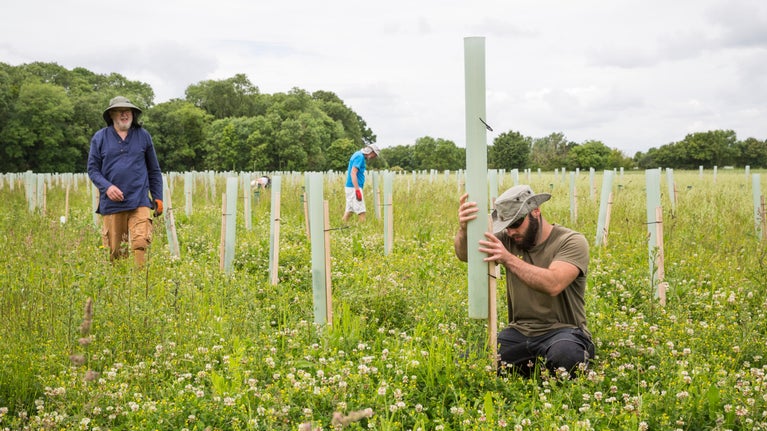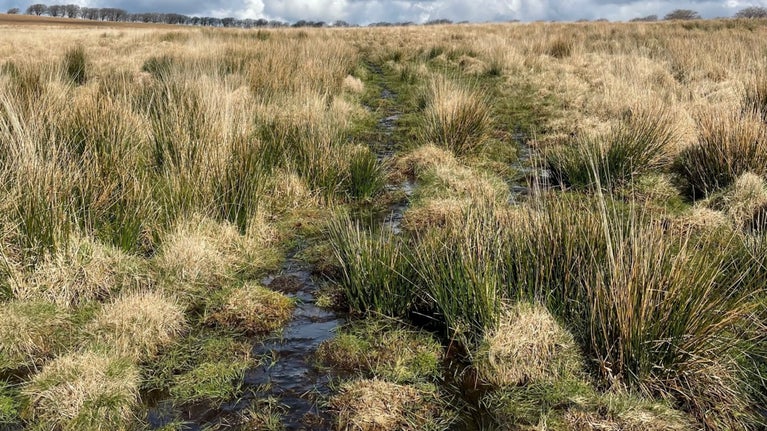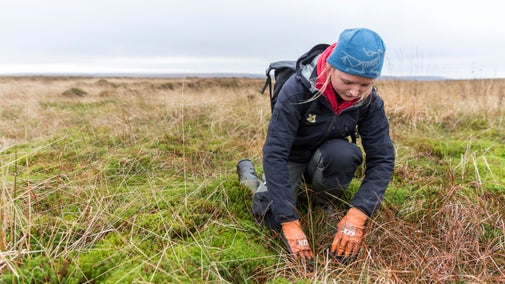
Tackling climate change
Uncover how we’re responding to the changing climate at places in our care.

We are working to restore the peatland at Alderman’s Barrow Allotment, on the high moorland of the Holnicote Estate, as part of the South West Peatland Project.
Our warm, moist climate is ideal for the growth of important peatlands. Peat bogs still blanket many of our hills where, for centuries, saturated bog mosses have drawn carbon dioxide out of the atmosphere and fixed it in the ground, reducing risk to the environment and helping to tackle climate change. In the past, many peat bogs were harmed by pollution and poor management. Fortunately, progress is being made in repairing damaged peatlands, with the National Trust at the forefront of restoring wild beauty at these places.
When a bog dries out, it starts to release carbon into the atmosphere. But when a bog is wet and rich with peat moss, it becomes an excellent trapper of carbon and a valuable tool in our fight against climate change. Bogs and healthy peatlands also attract a range of unique and fascinating plants and increase the diversity of wildlife.
To create a healthier peatland we have blocked man-made drainage with natural materials sourced from the estate such as logs and heather bales. This has slowed the rate of water flowing off the higher ground, encouraged the growth of more peat moss and the build-up of more carbon-storing peat. Monitoring of the vegetation, water levels and local species has taken place over the course of the project.
The work has also seen the creation of new woodland on the steep slopes of the combe to maximise the opportunity for carbon capture, help with the flow of water and enhance the biodiversity of the site.

The South West Peatland Partnership is actively restoring, celebrating and positively shaping the future of the UK’s South West peatlands for people, wildlife and the planet. The project is identifying sites across Exmoor and Dartmoor to be restored over the next five years.
The vision is of restored peatlands across Cornwall, Dartmoor and Exmoor that support wildlife, store carbon, manage flooding, provide clean water, enhance archaeology and the historic environment, and champion livelihoods. Through restoration, the project is working to prevent 652,625 tonnes of CO2 equivalent from being released as peatlands continue to degrade.
Having identified potential areas of peatland for restoration using peat extent maps, the SWPP received £9 million of funding from Natural England’s Nature for Climate Peatland Restoration scheme (NCPGS) for the work in 2021 for a 4-year project. This funding supports the government’s climate and environment commitments and their focus on restoring extensive areas of the UK’s damaged peatlands.
The total cost of the project is £13 million and will see significant match funding through South West Water’s Green Recovery programme, the Duchy of Cornwall and the National Trust, with support in kind coming from many other partners involved in the project.


Uncover how we’re responding to the changing climate at places in our care.

The South West Peatland Partnership is working to restore damaged peatland on Bodmin Moor, Dartmoor and Exmoor.
Discover the vital ways peat supports the environment, from carbon store to archaeological record, and see some of our key projects protecting and restoring the peatland in our care.

Discover how the National Trust piloted the riverlands floodplain reconnection at the Holnicote estate in Somerset to help enrich biodiversity and store carbon.
Find out more about our research into how climate change is affecting essential habitats in our care and discover the work we’re doing to capture more carbon.
